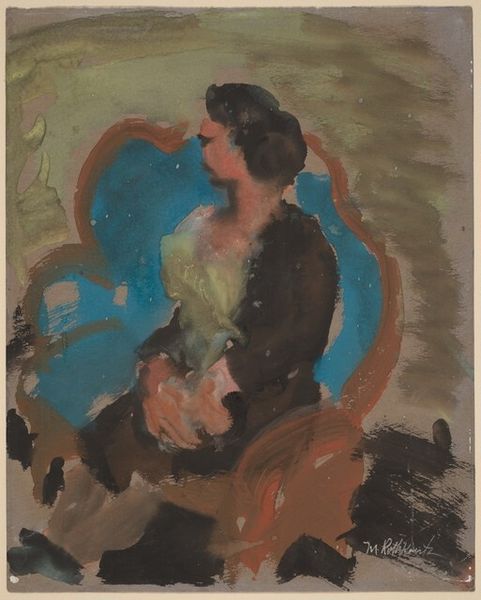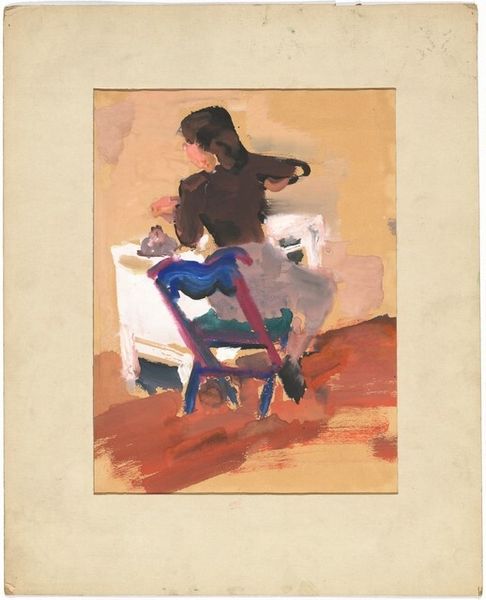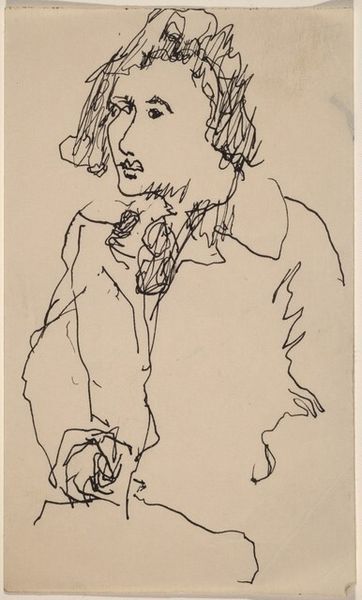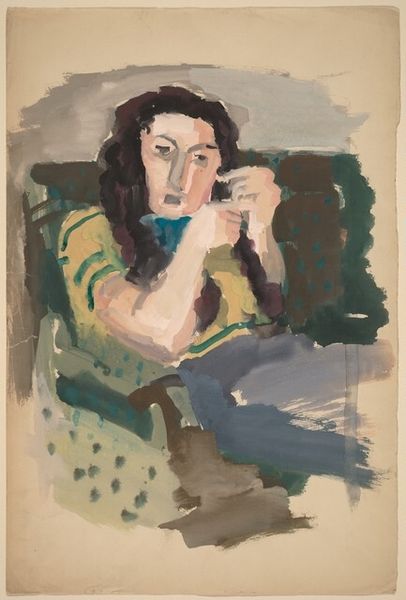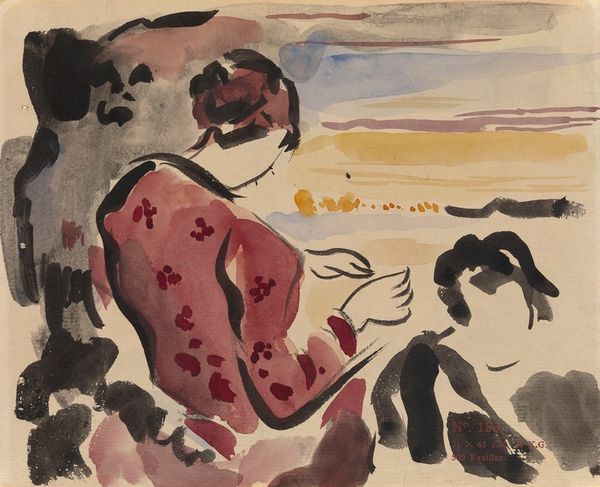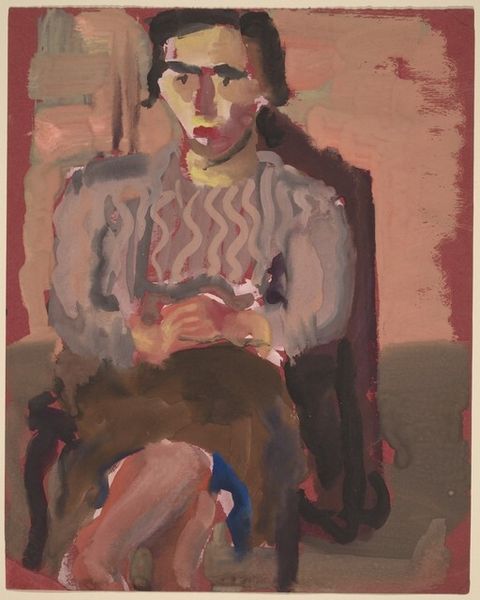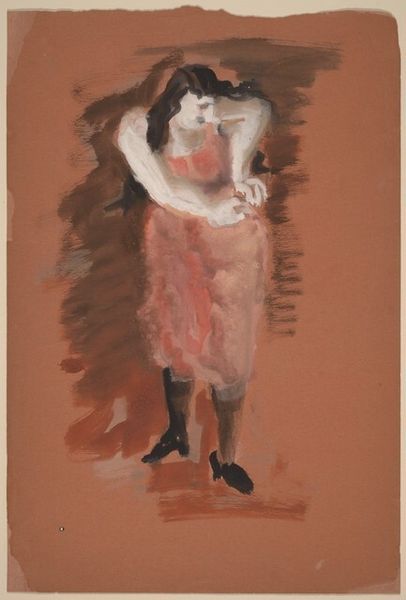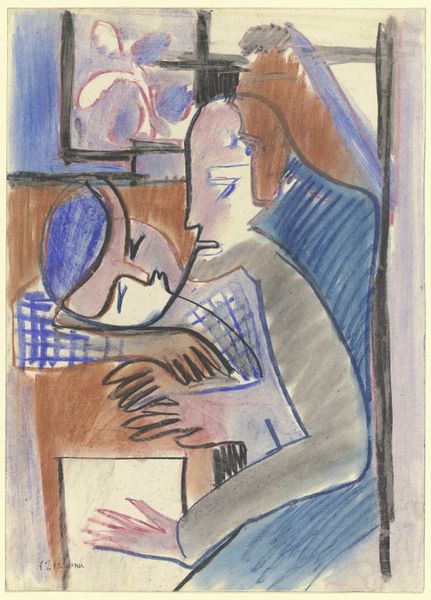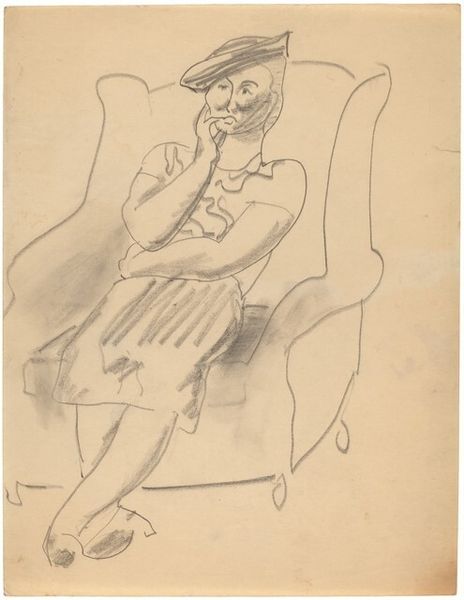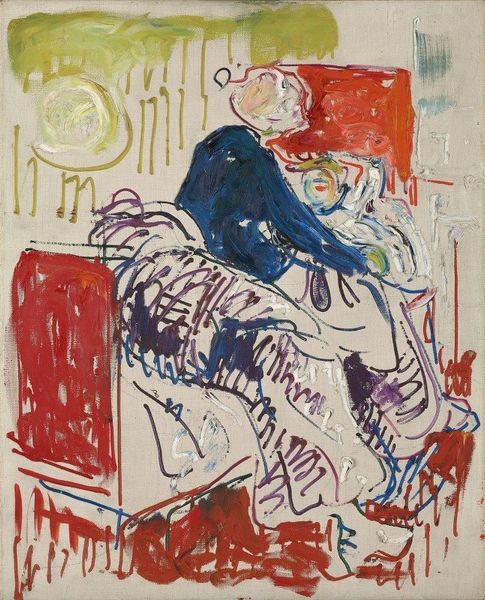
drawing, painting, watercolor
#
portrait
#
drawing
#
painting
#
figuration
#
watercolor
#
realism
Dimensions: sheet: 31.12 × 45.72 cm (12 1/4 × 18 in.)
Copyright: National Gallery of Art: CC0 1.0
Curator: Rothko’s "Untitled (reclining woman on green sofa)", believed to be from 1933 or 1934, offers us a glimpse into the artist's early figurative period. It's rendered in watercolor, showing a woman resting in what looks to be a thoughtful pose. Editor: My initial reaction is one of muted introspection. The color palette—mostly blues and greens—creates a melancholic yet comforting atmosphere. It makes you want to ponder your past. Curator: That sense of melancholy is interesting considering the socio-political context of the time. The Great Depression was deeply impacting artistic sensibilities and what was represented. Did artists have a social responsibility to showcase the plight of many? The image does reflect a sense of personal reflection amidst societal turmoil. Editor: I see it as more broadly speaking to the constraints on women's lives at the time. She appears almost confined by the sofa, by her very posture, as if held captive in domestic space, her thoughts her own sanctuary. I also see in it a commentary about the social function of femininity, which requires constant composure and surveillance of the self. The hand to her face gives off a tired, or resigned vibe, which seems consistent with these ideas. Curator: Absolutely. The composition emphasizes the subject's confinement. The green sofa acts as both support and cage, subtly pushing at expectations of how women were viewed and viewed themselves. In many ways, the figure seems dwarfed by the setting, symbolic of the overwhelming societal expectations women had to confront. Editor: And note the brushstrokes. Quick, expressive marks don't offer many details, but instead they contribute to the ambiguity of emotion, so the gaze is invited to search and create narratives beyond simple aesthetic appreciation. Curator: Exactly! It forces the viewer to grapple with the subject's inner world, blurring lines between observer and observed, prompting vital conversations about societal constructs during the artwork’s creation and contemporary interpretations that allow it to converse through decades. Editor: A conversation starter then, in both the past and the present. A pensive study of womanhood within the limitations imposed by history and social discourse. Curator: And through these dialogues we appreciate not just the image before us but the larger political implications around representations in art and society.
Comments
No comments
Be the first to comment and join the conversation on the ultimate creative platform.
